At the time of writing, Millwall sit 18th in the Championship after three losses, two draws, and one win.
Needless to say, the results could have been better.
Neil Harris arrived as manager in February and is still finding a way to properly implement his game model.
Millwall have the second-lowest possession percentage per match (42.7%) in the league and have created just 20 big chances so far this season.
In this tactical analysis and scout report, we are going to provide an in-depth analysis of Millwall’s Championship start using video analysis and data to discuss potential offensive and defensive improvements.
How Do Millwall Attack & Why Are They Underperforming?
At the time of writing, Millwall have been underperforming in both boxes.
In the rival’s box, Millwall have underperformed compared to their xG.
This is not alarming in numbers, but the types of opportunities they’re creating may not be optimal for their players just now.
Neil Harris’s main way to create goalscoring chances is to attack directly after recovery.
Let’s see this with a short sequence.
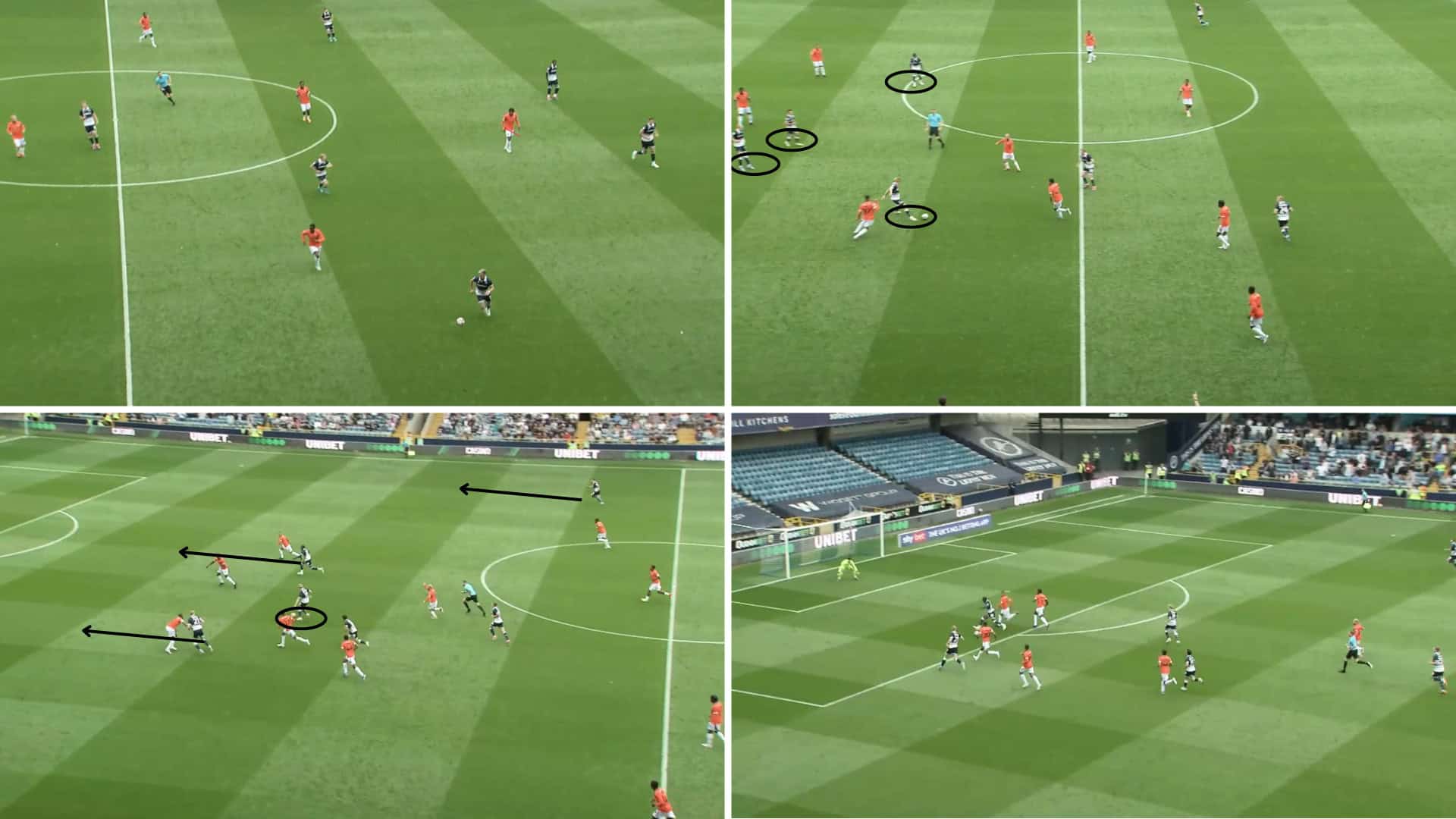
This action ended up with a shot by Romain Esse being blocked.
Millwall then recover and look to verticalize fast.
When the possession is restarted, the centre-back immediately tries to find a path to the rival goal.
When the player receives in advanced zones, his teammates support the play.
But once they turn the possession over, each offensive player runs in behind to create opportunities quickly.
Another important detail is that the wide players also offer themselves in the attacking phase.
Neil Harris looks to exploit offensive transitions while the team creates goalscoring chances by attacking disorganised defensive lines.
As Millwall’s shots map shows below, this frequently fails to result in goals as the velocity of the ball while running also affects the accuracy of the shots.
Millwall Shots Map
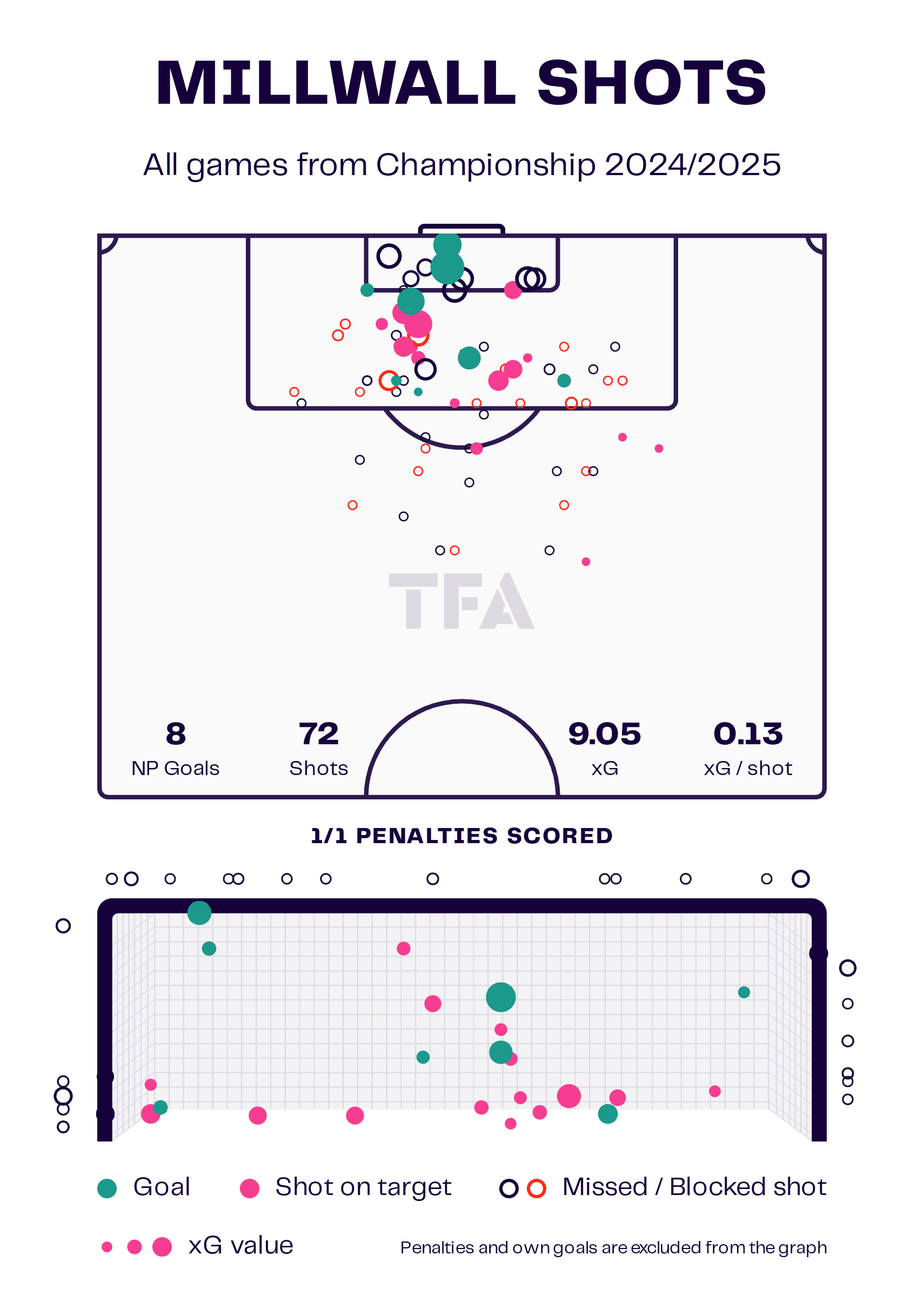
For Millwall, this is an unpredictable strategy that can be improved if the players get used to finishing these types of plays.
However the main idea has been working; Millwall create danger when the rival is not constantly attacking positionally.
In that sense, both George Honeyman and George Saville are crucial to progressing the ball with velocity and accuracy.
As the progressive pass maps below show, their impact through progressive passes is significant.
George Honeyman And George Saville Progressive Passes Map
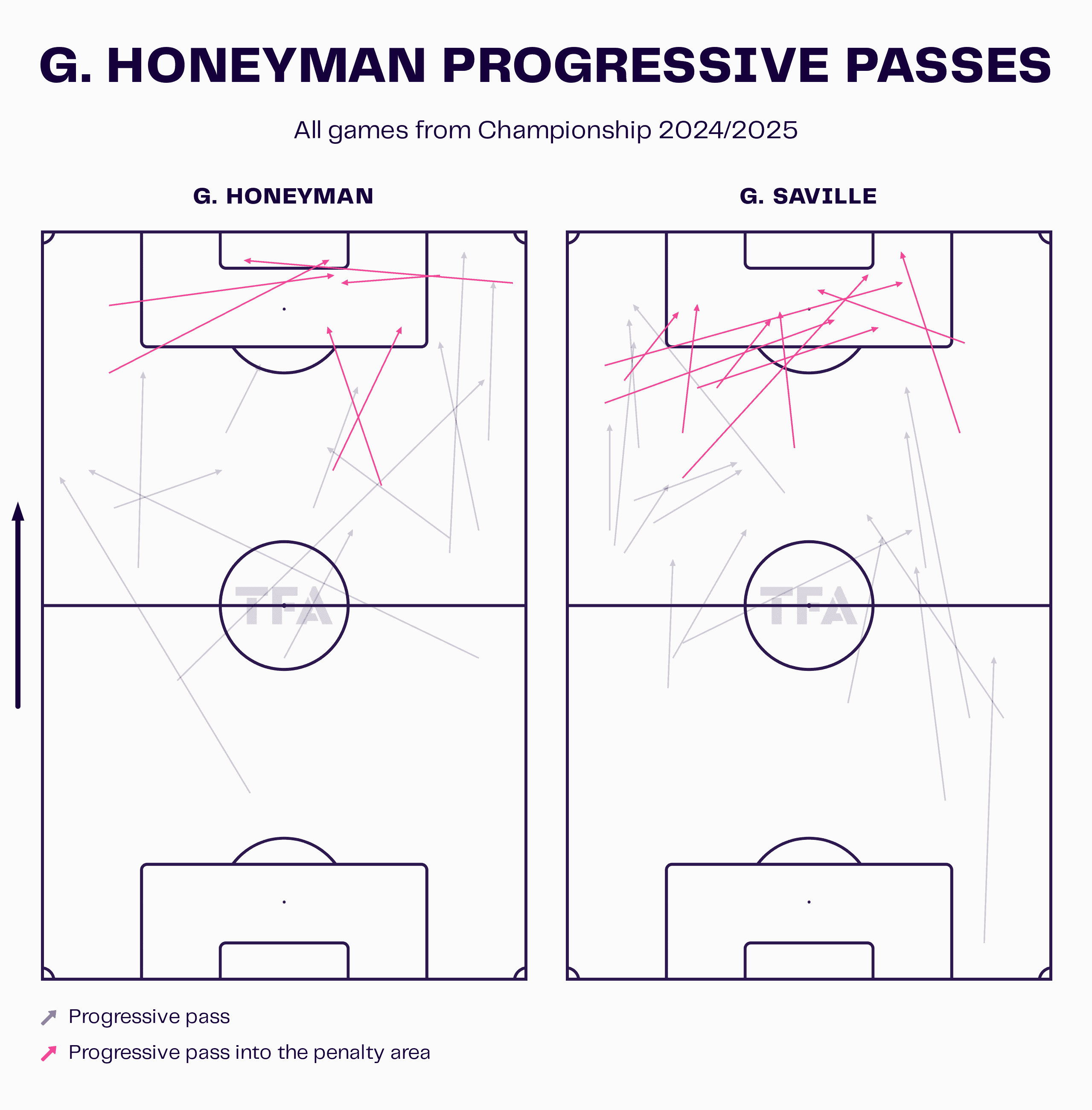
They both have a great technique for making difficult passes under pressure, and Millwall’s model requires them to execute a high volume of passes under pressure per match.
As their partners make threatening runs into space, Honeyman and Saville can find them easily.
If Saville has an open pitch, he can use his extended ground-passing range, as he is capable of activating teammates deeper and making through passes.
On the other hand, Honeyman constantly supports the goal.
He frequently drops around to attack wider, and as a final third player, his ball-kicking to make crosses and penetrate the box from wide passes is a nice tool for Millwall.
All of this happens while Casper De Norre is the main muscle of the midfield.
With Saville, he has an important volume of duel participation.
De Norre is usually the one who stays in the axis, although he interchanges with Saville as one will sit deeper while the other will make their presence known slightly ahead.
This double pivot is balanced and complete, with a keen understanding of the ball and decent strength out of possession.
The isolated player is another good resource for Millwall.
Almost always, when the full-backs arrive, the attacking midfielders are inside central channels—like Romain Esse, who is constantly making himself an option via his off-the-ball movement or making his presence known between the lines.
As the sequence shows, this is a constant positioning of their wide players.
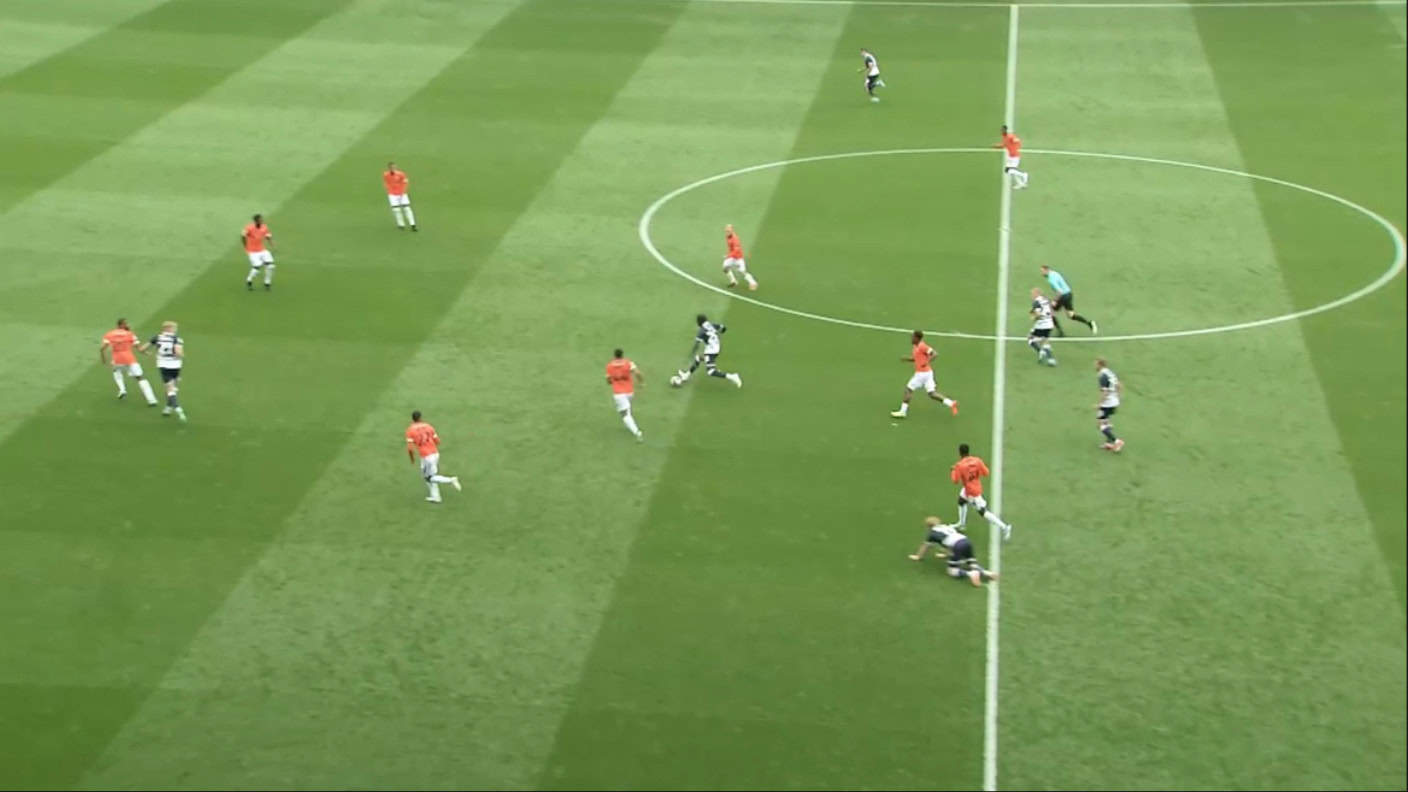
When they attack narrow blocks, they look for speed to cause the opposition block to shift.
If they can not break the opposition block through central channels, they can finish with in-swinging crosses.
The technique of these crosses is still developing, but Millwall’s aerial play inside the box is the next threat we are going to analyse.
Millwall Set-Piece Awareness
Some of Millwall’s best goals have come from the aerial game, such as crosses from set-pieces like corners, free kicks, or even dangerous throw-ins.
Millwall’s aerial play is good; in the image below, the corner ended in a goal for Millwall.
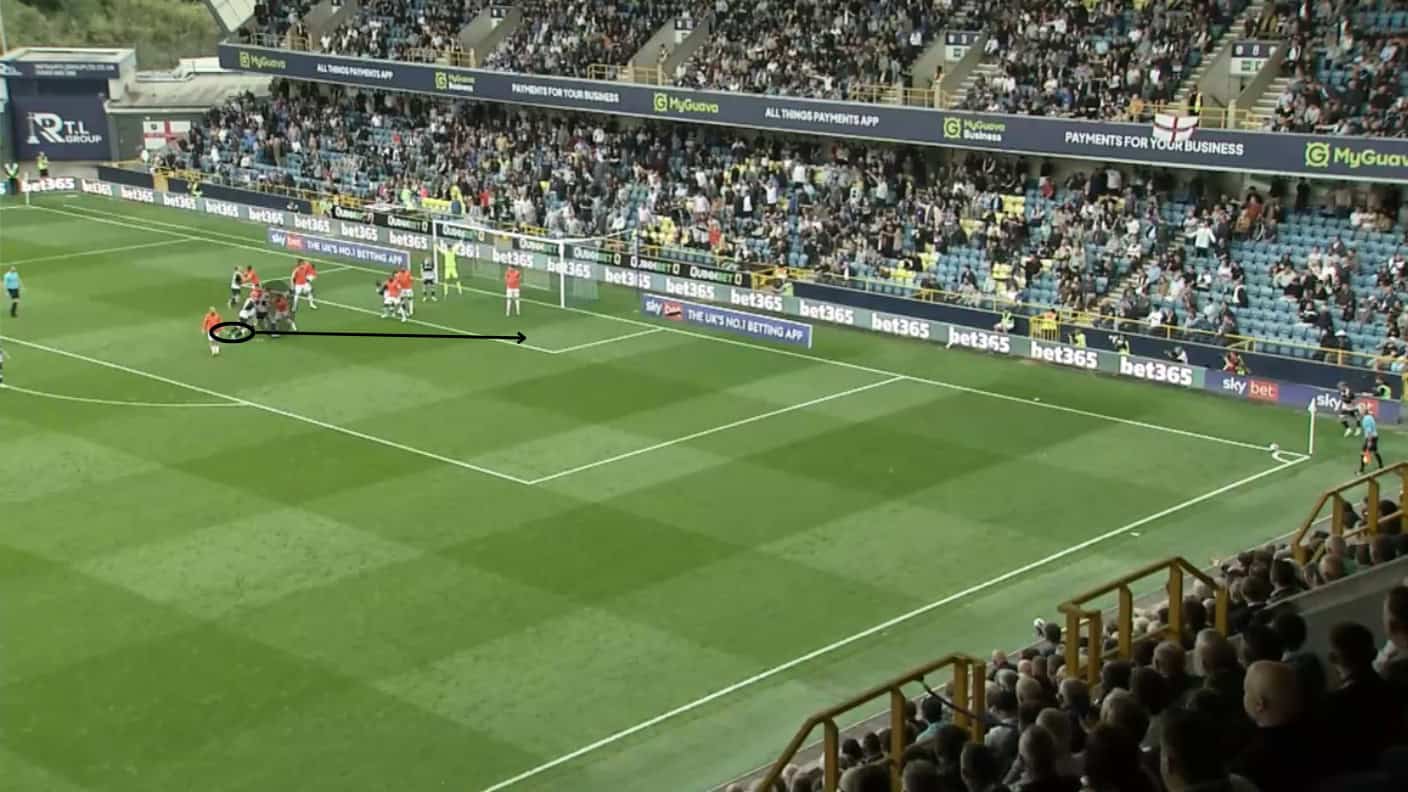
Jake Cooper creates space for Joe Bryan to attack the first post.
Then, Bryan deflects the ball, the opposition defenders get mismatched, and Watmore scores.
Like with live-ball actions, Millwall are not so clean, and they try to create as many imbalances as possible within the box to score.
Also, some players use this imbalance as an advantage like Joe Bryan or Japhet Tanganga, who have a big physical presence and understand through playing in the Premier League, the importance of overloading the box during aerial play.
How Do Millwall Concede Goals?
Beyond the style of defending, one of the main culprits causing Millwall to concede goals has been opponents exposing the goalkeeper Lukas Jensen’s weakness.
The 25-year-old has a fantastic shot-stopping technique when he has to stretch at full length to deal with powerful shots.
But take a look at his shots faced map below.
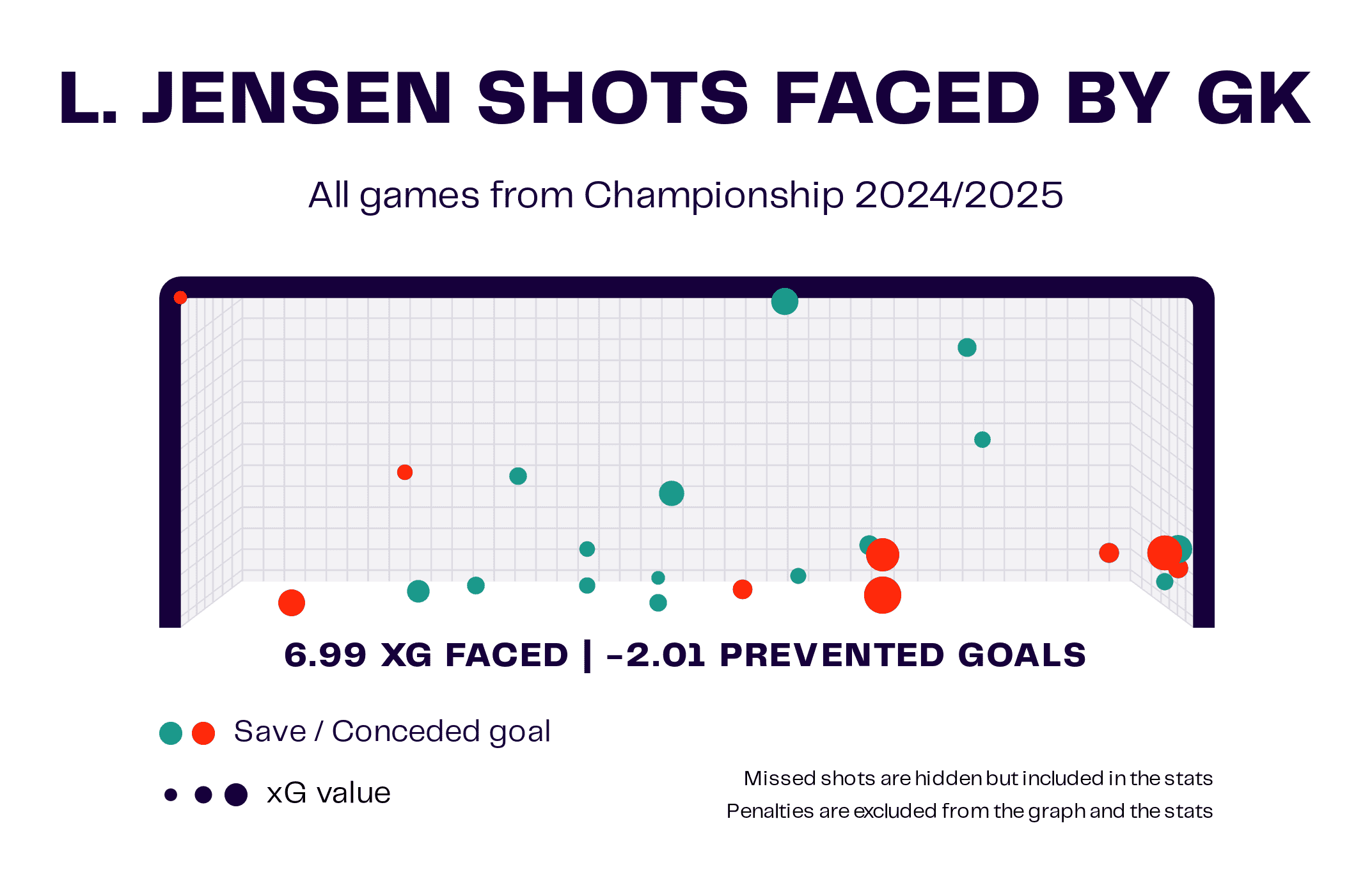
Jensen is 1.98m tall, a huge advantage for a goalkeeper.
Nevertheless, his reaction capacity when the opposition’s shots go low needs improvement.
His agility to move quickly after a close low shot is not great and the rivals see this when they shoot from the top of the box while the goalkeeper’s vision is limited.
Millwall have not faced much xG, but they are still underperforming in this metric.
Millwall Defensive Style Of Play
Defensively, Neil Harris’s tactics for Millwall typically use a narrow mid-block to close central passing lanes, providing a good positioning after recovery.
In this regard, Milwall are solid and at the top of the league in terms of metrics like interceptions or tackles per game.
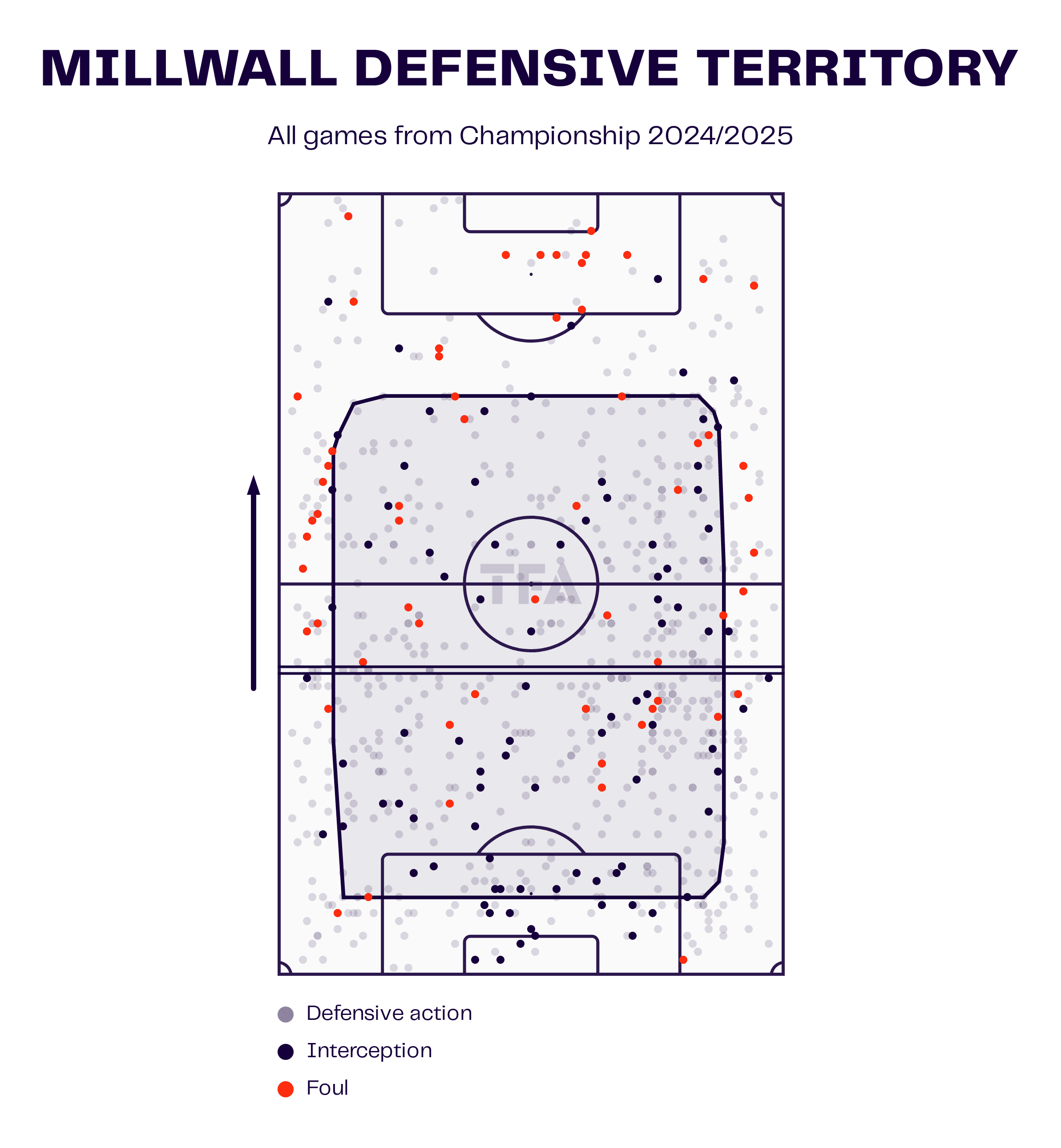
In addition, Millwall are comfortable defending in a low block and being reactive, facing teams with a possession-based style.
Sometimes, while defending the box, they allow shots from the top of the box after not too certain clearances, as the image below displays.
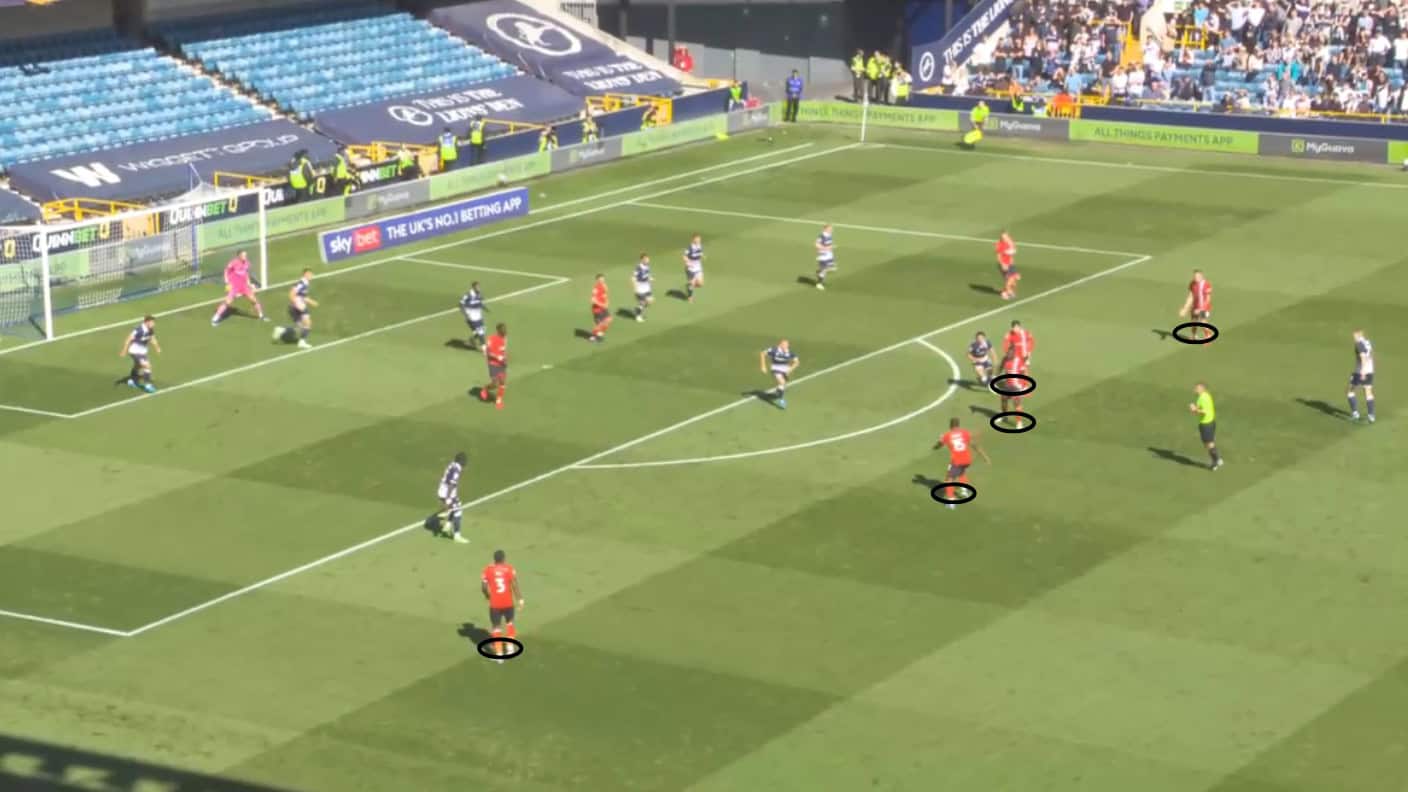
This happens after orienting the rival’s possession to wide areas.
They get used to defending crosses, but it is still complex to cover the top of the box accurately.
Even so, Millwall’s defensive awareness is one of the most positive things about Harris’s tactics.
As stated before, Millwall are comfortable creating dangerous attacks after faster recoveries.
Without a solid counter-pressing system though, Millwall’s high regains are optimistic.
Millwall High Regains Map

As their high regains map shows, Millwall have recovered possession quite a bit in the opposition’s half.
The volume of counter-pressing recoveries is higher, meaning the pressing ecosystem is working as intended.
Two standouts here are George Honeyman and Romain Esse.
Both are committed players after losing the ball, but they are great at making powerful tackles, crashing bodies, and sticking their feet in to steal the ball when the rival is trying to hide it.
In addition, Romain Esse is the youngest player among the usual starters at just age 19, while also being the most valuable talent in Millwall’s squad now.
Esse is a left-footed offensive player who starts as a right-winger but has the instinct of a ’10’.
He has so much sensibility in ball kicking, a refined ball-carrying close to his feet and a good capacity to shoot from the top or penetrate into the box by driving.
Romain Esse Penetrating Carries Map

As modern football requires, Romain Esse is a pressing machine.
He displays intelligence with regard to when he should jump and close down, as well as when using the touchline as a defender; he’s also aggressive in tackles and intense throughout the entire match.
He is a potential Premier League talent who has been brilliant as a youth and now has Neil Harris’s confidence to make more appearances in the Championship.
Conclusion
Millwall’s position in the Championship is not entirely reflective of the quality of the team’s overall performance on the pitch, considering different aspects and the underlying numbers.
Millwall have been underperforming according to the metrics, as they have scored fewer and conceded more goals than expected.
Furthermore, Millwall’s game model is still developing with strong ideas that already work but are not fully optimized.
Still, they have the talent to fix this.
Consistent training and improving the chemistry between the players will make a big difference but there is still a lot of work to do if Millwall want to be higher in the Championship.
Offensive players have to take on more goal responsibilities, increase their average, and be clinical in their last touch.
This team can potentially compete better but the truth is that at the moment, Millwall are giving us good football under Neil Harris’s coaching even though the results are negative in terms of their current position in the Championship.

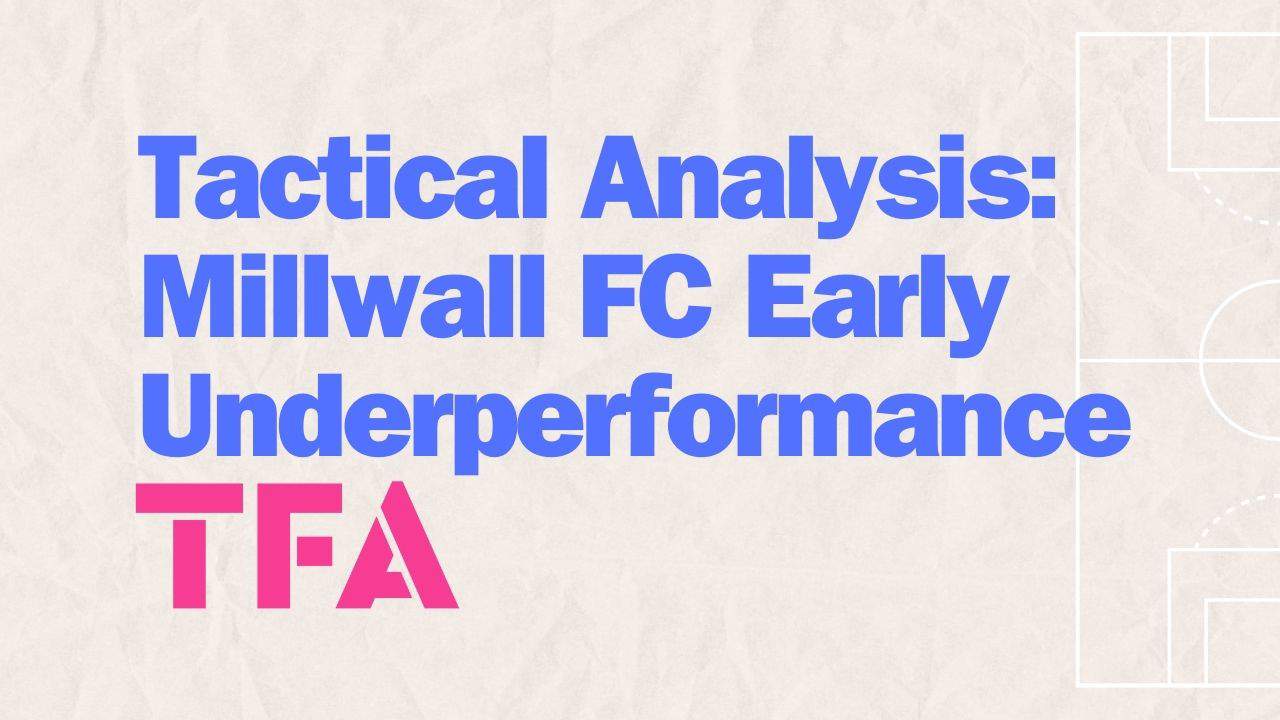




Comments